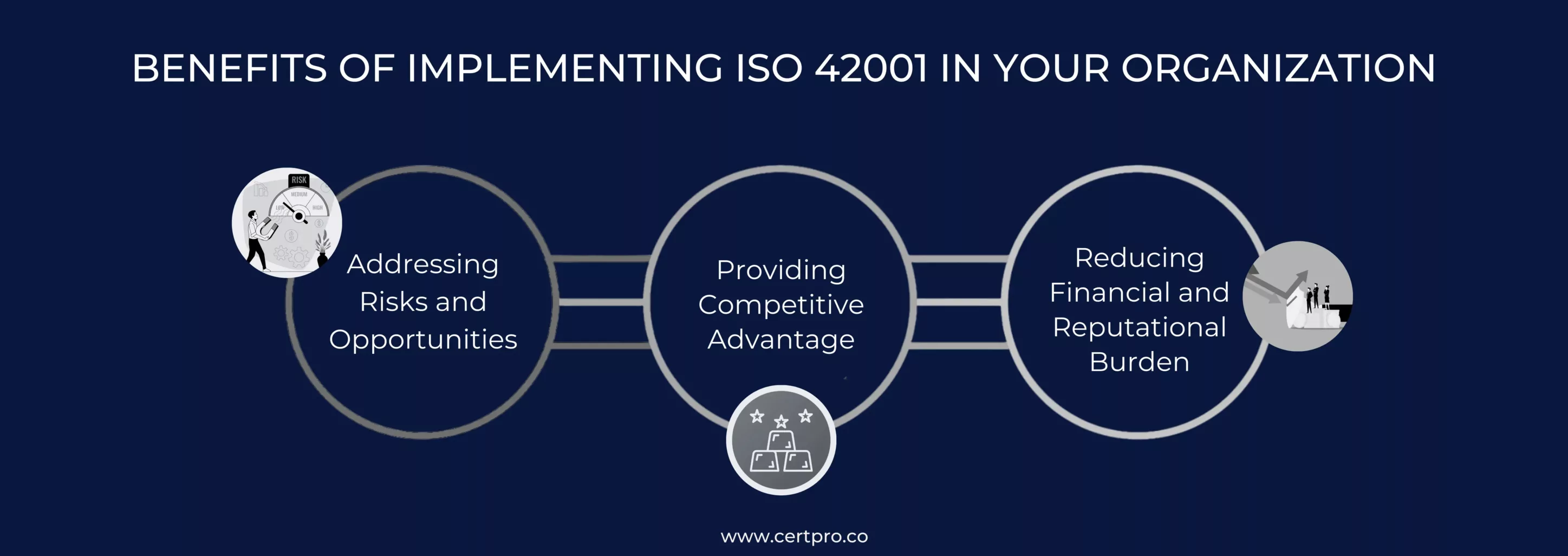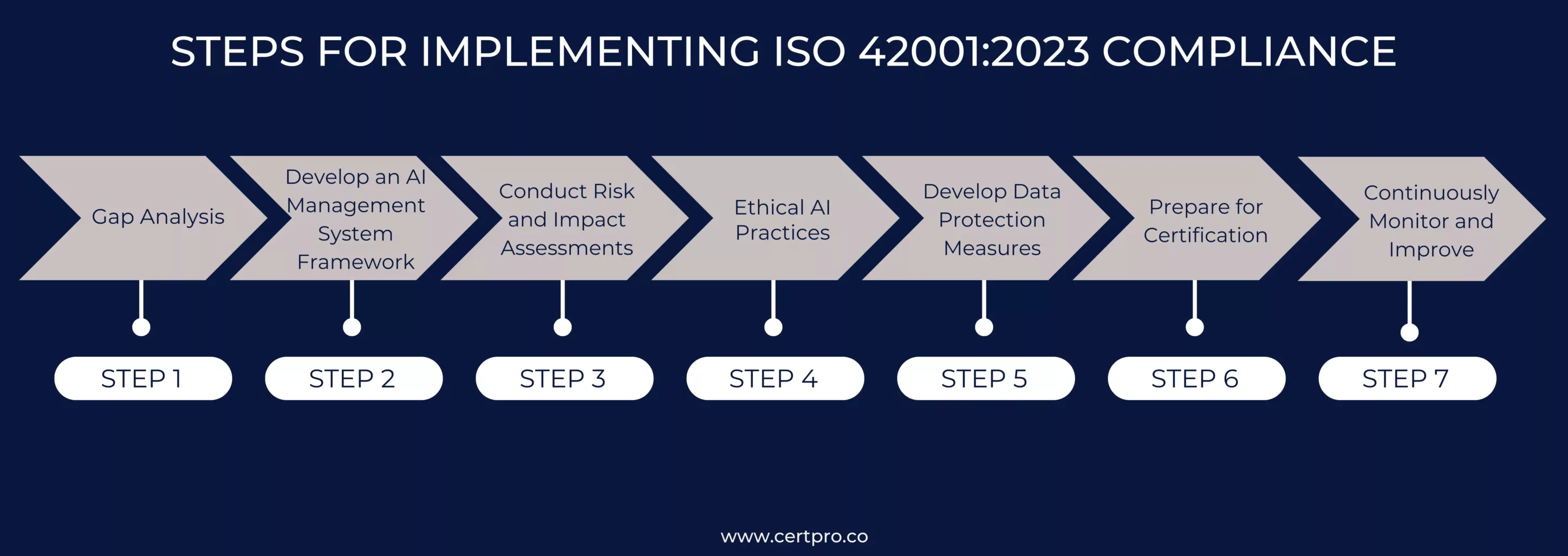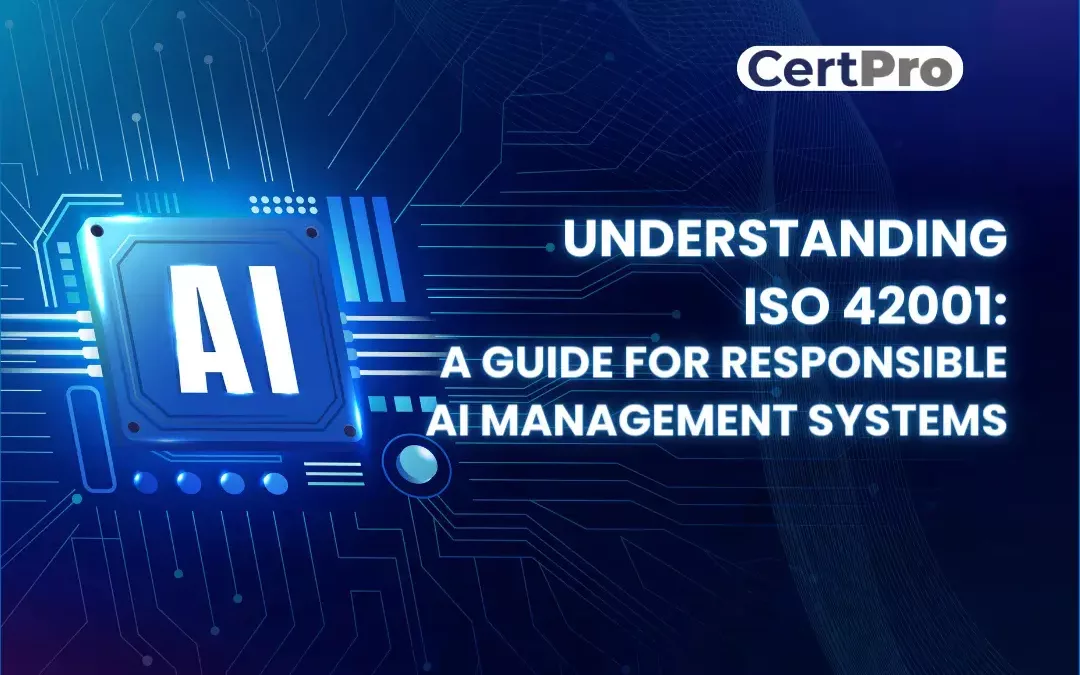The invention of artificial intelligence (AI) has changed the operational processes of many industries. However, the rapid growth of technology increases ethical, security, and privacy-related concerns. Therefore, the International Organization for Standardization (ISO) and the International Electrotechnical Commission (IEC) have developed new standards for monitoring AI systems. The ISO 42001 standard was published on December 18, 2023, to guide the organizations that design, develop, and deploy AI systems. The prime concerns are implementing the standards and maintaining transparency and accountability. In addition, it mitigates risk and ensures safety.
Furthermore, this article will delve into the detailed features of ISO/IEC 42001. We will explore new possibilities for safely handling AI and analyze its future scope of application. Hence, the article will supplement your knowledge about the latest AI regulation in the market.
STRUCTURE OF ISO 42001
The standard has some key components for efficiently managing AI systems. The components are listed below:
A Robust AI Management System: The organization must have a practical framework, policies, and processes. Therefore, it helps in managing AI-based systems.
Risk Assessment Process: A systematic approach is required to identify and mitigate potential risks.
Assessment of AI Impact: It is necessary to recognize the impact of AI systems on stakeholders. Thus, the assessments consider the ethical and environmental implications of AI.
Data Protection and Security: Organizations ensure compliance with privacy regulations and assure clients’ data privacy.
In addition, the standards include annexes that offer detailed guidelines on managing AI. A brief overview of annexes is incorporated here:
Annex A: The segment shares guidance and regulations for developing AI-based systems
Annex B: It offers actionable guidance on enforcing and controlling AI. It provides methodologies for an effective data management process.
Annex C: In this segment, you get ideas about the potential risk of implementing AI in your organization.
Annex D: It establishes standards tailored for specific industries.
If your organization produces, develops, or uses AI-based systems, compliance with ISO 42001 certification benefits your functioning. However, it is a voluntary standard and not mandatory for any organization. Still, the compliance applied by multiple companies is becoming the benchmark for AI management systems. Therefore, organizations must develop a proactive approach to adopting the standards.
ORGANIZATIONAL ROLES AND RESPONSIBILITIES IN IMPLEMENTING ISO 42001
Implementing the standards requires an effective management process and the employee’s support. Some other relevant factors are listed below:
AI provider: The term signifies AI platform providers or product or service providers, which are, in a simple way, organizations that provide products or services related to AI systems.
AI producer: Organizations that design, develop, and deploy services that use AI systems. For example, AI model designers, implementers, and model verifiers are known as AI producers.
AI customer: Organizations that use an AI product or services are known as AI customers.
BENEFITS OF IMPLEMENTING ISO 42001 IN YOUR ORGANIZATION
Many organizations improve their credibility and functionalities through certification. Thus, moving forward with the accreditation momentarily rather than later would be a strategic step.
Addressing Risks and Opportunities: Implementing ISO 42001 offers a systematic approach. It recognizes and evaluates the risks of using AI. Organizations must realize the risks of using AI in their operations. Therefore, the standards protect the organization from AI-related risks by mitigating them.
Providing Competitive Advantage: AI regulatory laws implemented to provide security and privacy. Hence, this assumes that companies will require AI compliance for business advancement. Early implementation signifies the organization’s commitment to the responsible use of AI. Thus, the overview enhances the organization’s trust and confidence in the competitive market.
Reducing Financial and Reputational Burden: Complying with compliance reduces organizations’ financial burdens and avoids the risk of penalties and breaches. Therefore, incorporating ISO 42001 helps streamline the AI process. In addition, rectifying weaknesses prevents financial and reputational damages.

ISO 42001: UNDERSTANDING THE STANDARDS
ISO 42001 certification is a complex compliance that requires a compliance manager to maintain the procedure. The following steps need to be followed:
Understand the Standard: If you are adopting ISO/IEC 42001 in your organization, familiarize with the standards. Thus, it is essential to understand the requirements and recommendations for effective implementation. In this case, you can find expert support from auditing and consulting firms. Furthermore, you can check with CertPro, a promising auditing and consulting firm that can help you. Moreover, the knowledgeable auditors from CertPro can make your expedition more comfortable and time-saving. Our guidance and suggestions reduce the risks of AI use and adhere to compliance with minimal effort.
Certification Preparation: Educate your employees about the process. In addition, the stakeholders should be informed regarding the complaint. Internal conversation and cooperation are required for implementing compliance. If you seek help from third-party auditors, your employees will work with them to execute strong policies. Therefore, an effective complaint process requires cooperation and sharing the respective responsibilities.
Readiness Assessment: Consider a trusted compliance partner like Certpro. We can help you conduct a readiness assessment based on your organization’s requirements. After completing the evaluation, you will comprehend the gaps in achieving compliance.
STEPS FOR IMPLEMENTING ISO 42001:2023 COMPLIANCE
Organizations can apply the following steps for ISO 42001 compliance.
Gap Analysis: Implementing compliance requires a gap analysis to recognize areas for improvement and suggest desirable changes necessary for complying with regulations. Therefore, ISO Artificial Intelligence compliance demands gap analysis at the initial stage to identify organizations’ weaknesses.
Develop an AI Management System Framework: Depending on the gap analysis, prepare an AIMS framework that addresses the goal and objective of your organization.
Conduct Risk and Impact Assessments: ISO 42001 mandates some assessments to review the controls. Firstly, organizations must execute AI risk assessments to recognize the potential hazards to users and society on a large scale. Secondly, an AI impact assessment is conducted to understand the implications of deploying AI on individuals or the community. Lastly, deploy and develop strategies to reduce the risks of your organizations.
Ethical AI Practices: Confirms that the organizations incorporate ethical considerations into the design and development of the policies.
Develop Data Protection Measures: ISO 42001 certification ensures that AI systems adhere to data protection regulations. The compliance implements strong security measures to protect the AI systems from unauthorized access and data breaches. In addition, the regulations enable the AI-based decision-making process to develop trust.
Prepare for Certification: Organizations can undergo an audit after making the necessary changes to AI-based system protections. A successful audit can help the organization obtain certification to improve future opportunities.
Continuously Monitor and Improve: ISO Artificial Intelligence compliance requires continuous monitoring and improvement to adhere to compliance. This process ensures the responsible use of AI and eliminates its risks.

COMPARISON OF THE EU AI ACT AND ISO/IEC 42001
ISO/IEC 42001 and the EU AI Act relate to AI-based systems governance and regulations. However, the Act have different priorities for achieving the goal. Therefore, the Act prioritizes ethical practices in developing trustworthy and transparent AI systems. The main aim is to reduce the potential risk of AI on individuals and communities. Nonetheless, the scope and applicability differ from each other. The EU AI Act focuses on EU AI regulations, whereas ISO/IEC 42001 offers a global AI management structure. The EU AI Act is regulated within the EU region. While ISO 42001 is considered an international standard for AI management.
Furthermore, the EU AI Act is mandatory for organizations handling data from Europe or doing business in Europe. Conversely, ISO 42001 is a voluntary standard that might help organizations grow their business. The EU AI Act has created strict rules for managing high-risk AI systems. However, ISO 42001 has more flexible rules and obligations. Lastly, the EU AI Act aligns with GDPR, while ISO 42001 follows the standards of other ISO regulations.
COLLABORATION WITH CERTPRO FOR AI GOVERNANCE
ISO/IEC 42001 offers a complex regulation framework that impacts AI-based systems. Organizations may also ensure that their AI monitoring regulations effectively align with their business objectives. In this regard, implementing compliance is a complex process requiring expert suggestions. You can get in touch with CertPro. We are helping thousands of our clients in complying with regulations. Our expert team can guide you in this respect and add their valuable suggestions for future improvements. We will ensure that our intervention guides you in implementing a robust framework that improves transparency and reduces risks. Our auditing expert helps you in managing compliance. You can visit CertPro.co for more tailored support and guidance.
FAQ
Does this standard apply to all AI systems?
Yes, the standard applies to different AI application settings. It promotes responsible use and governance of AI-based systems.
Are there any requirements for ISO/IEC 42001 certification?
Organizations must have robust AI management systems that align with the standard’s requirements. In addition, proper documentation of policies and risk management practices is necessary for the ISO 42001 audit process.
How is ISO/IEC 42001 connected to other management system standards?
It is better implemented with quality standards and safety and security standards. It has similarities with ISO 9001 and ISO 27001 standards.
What are the Key Themes of ISO 42001
The key themes of ISO 42001 are effective leadership, proper planning, employee support, performance evaluations, and continuous improvements.
What is the difference between ISO 42001 and ISO 27001?
ISO 42001 mainly focuses on the resources related to AI systems and eliminates the risk of AI use in organizations. While ISO 27001 addresses the context of human resource security and ensures infrastructural security.

About the Author
SHREYAS SHASTHA DRUPADHA
Shreyas Shastha Drupadha, a Senior Business Consultant. Serving as an ISO 27001 Lead Auditor, Shreyas ensures the establishment of robust information security management systems. His expertise also encompasses GDPR, HIPAA, CCPA, and PIPEDA implementation.
HOW DOES THE NIST CYBERSECURITY FRAMEWORK FUNCTION, AND WHY IS IT IMPORTANT?
Emerging cyber threats make cybersecurity an essential consideration for organizations handling and managing data. In this regard, the NIST cybersecurity framework applies to improving your cybersecurity program. It is a set of guidelines that helps improve your...
EUROPEAN UNION’S ARTIFICIAL INTELLIGENCE ACT: HOW THIS GROUNDBREAKING LAW AFFECTS YOUR BUSINESS
Nowadays, Artificial Intelligence (AI) is transforming our lives exceptionally well. AI is now streamlining healthcare services, providing virtual assistance, and fulfilling queries. Technologies have boons and curses. Similarly, AI creates many concerns about...
How to Implement GRC Frameworks in 2024: Step-by-Step Guide
The rapidly evolving business environment, complexity, and accountability enhance the importance of the organization's governance, risk management, and compliance initiatives. Therefore, if your company finds difficulties expanding, recheck your organization's...




